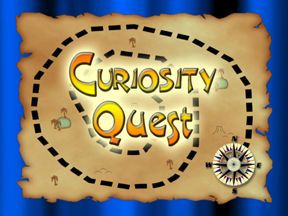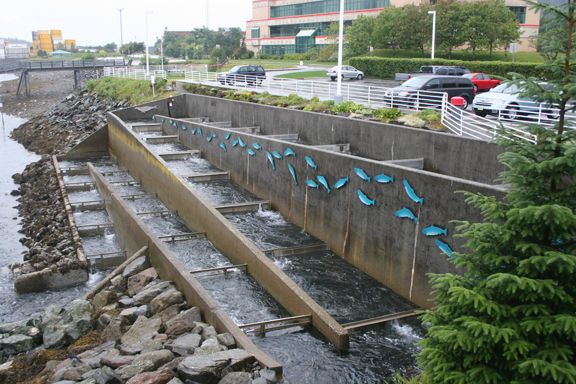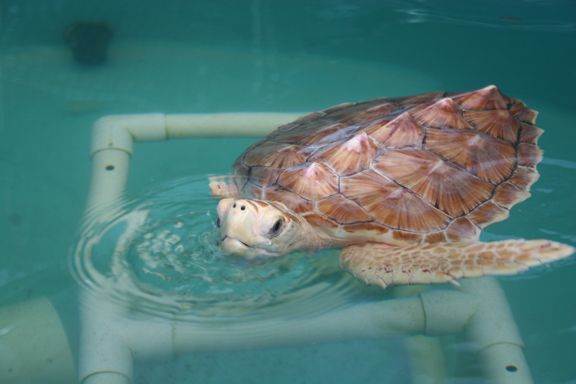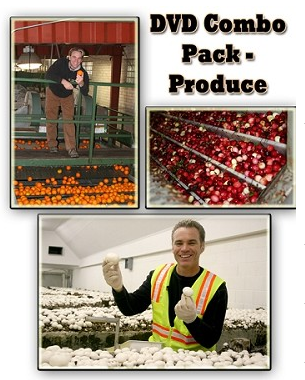 How many time this week have your kids asked you "Why?" That happens a lot around here, but I have a new solution, DVD's from Curiosity Quest. For this review we received two of Curiosity Quest's DVD Combo Packs: Swimmers of the Sea, about Penguins, Sea Turtles, and Salmon, and Produce, about Mushrooms, Cranberries and Orange Packing. Either of these DVD Combo packs can be purchased for $24.95 each. These DVD's are geared for ages 7-14, but you and your older children will probably enjoy them too!
How many time this week have your kids asked you "Why?" That happens a lot around here, but I have a new solution, DVD's from Curiosity Quest. For this review we received two of Curiosity Quest's DVD Combo Packs: Swimmers of the Sea, about Penguins, Sea Turtles, and Salmon, and Produce, about Mushrooms, Cranberries and Orange Packing. Either of these DVD Combo packs can be purchased for $24.95 each. These DVD's are geared for ages 7-14, but you and your older children will probably enjoy them too!Arlene and I watched the DVD's together over a couple of days. After we were done, Arlene summed up Curiosity Quest as "Dirty Jobs for Kids!" We both learned a lot while watching the episodes. We began the Swimmers of the Sea DVD with Salmon. Each episode is about 30 minutes, giving you about 90 minutes of viewing on this DVD. Joel Greene is the host of the Curiosity Quest series, and each episode's adventure begins with a question from a viewer, or several viewers who write in with questions about what they're curious about.

 Joel learns a lot about the salmon that live in and around Alaska, including a mnemonic to remember all 5 types of salmon. Along the way, viewers learn about each step from when (and why) salmon spawn in the freshwater streams of Alaska, through their birth, growth, and release into the ocean until they come back to spawn and finish their lives. I learned a lot about salmon, and really appreciate being able to visit my local supermarket and purchase salmon for dinner. After all the salmon go through in their life cycle, it makes me thankful to just purchase the end product ready to grill for dinner.
Joel learns a lot about the salmon that live in and around Alaska, including a mnemonic to remember all 5 types of salmon. Along the way, viewers learn about each step from when (and why) salmon spawn in the freshwater streams of Alaska, through their birth, growth, and release into the ocean until they come back to spawn and finish their lives. I learned a lot about salmon, and really appreciate being able to visit my local supermarket and purchase salmon for dinner. After all the salmon go through in their life cycle, it makes me thankful to just purchase the end product ready to grill for dinner.In the next episode we watched, Joel went to the Aquarium of the Pacific to learn about Magellanic Penguins that normally live in a temperate climate. First thing in the morning, Joel learns about Penguin vitamins and the types of fish penguins eat. Joel and the viewers get introduced to the penguins that live at the Aquarium and Joel gets to help with the morning feeding. Along the way there are "Fun Facts," definitions of terms, and "Man on the street" type questioning of people of various ages. You'll earn what a molt is, what penguins eat, and how they are social birds that live in groups. Joel also learns that penguins can swim up to 5 miles per hour, and that they have solid bones, unlike flying birds that have hollow bones.



The second episode on the Produce DVD is all about oranges and lasts about 30 minutes. Joel begins the day learning how to pick oranges, and the care it takes to clean all 400-500 oranges off of a tree and put them in the bin to send to the sorting house. In the sorting house you'll join Joel as he learns how each orange is cleaned, graded and sorted by size. Although a lot of the work is done by machines, I was surpassed to learn how much of the inspection is done by hand. This insures that a bad orange doesn't get mixed in and damage the good ones on the way to the store. Did you know that the first orange tree seedlings came to America in 1493 with Christopher Columbus? Neither did I.
The final episode on the Produce DVD is about mushrooms. It is an amazing process to see the care that goes into preparing the compost that becomes the growing soil for mushrooms. I never realized they need to sterilize the growing medium so that mushrooms are the ONLY fungus that grows. As the day goes on, you may find yourself laughing along with Joel as he realizes just how slow he is at picking mushrooms and just how skilled the pickers are. Have you ever seen tiny mushrooms? They only take a couple days to grow market size, and you'll learn how they harvest selectively to allow further mushrooms to grow in the same growing area. A funny thing happened right after we watched this episode the first time. I purchased some portabella mushrooms at the store, and in the package with the two large mushrooms was a inky-dinky mushroom. Arlene joked that it must have gotten picked by accident by someone like Joel Greene while they were just learning.
We really enjoyed all of the episodes on both DVD's. These are the type of show where you'll watch them more than once, and you may find your children asking if they can watch them again when their friends come over to visit. These videos answer a lot of "Why" questions, and they're entertaining, so you should feel comfortable with your kids watching them. Remember that they're geared for ages 7-14, but don't let that limit you. Your younger and older children will enjoy them too. I learned a lot from watching the six episodes we received. There are a lot more episodes available from Curiosity Quest, as well as some membership options that will save you money if you're wanting to get several episodes.
Overall, I give the Curiosity Quest episodes an A grade, and I can understand why they have earned awards. While talking to the viewers, Joel never talks above the level the children should be able to understand. Complicated words or terms are either defined and/or explained through actions. Each episode includes the "Fun Facts" and 'kid on the street' interviews. You can visit Curiosity Quest on Facebook or see how the episodes are made by watching their videos on You Tube. Find a reason to get yourself some Curiosity Quest DVD's soon - you'll be glad you did!


No comments:
Post a Comment